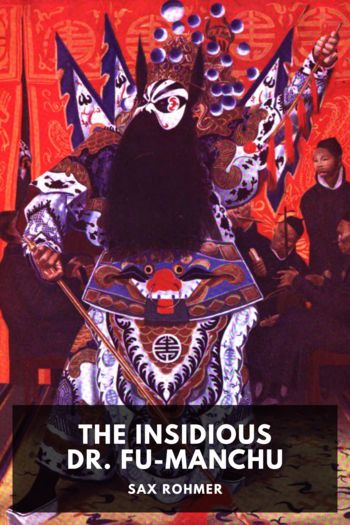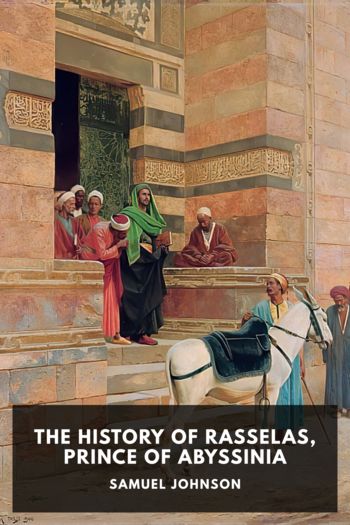Genre Other. Page - 304

Description
His Masterpiece, sometimes translated as “The Work” or “The Masterpiece,” is Zola’s 14th entry in his Rougon-Macquart series of novels. In it we see Claude Lantier, a painter with obvious talent, struggle to leave a revolutionary mark on the art world of 19th-century Paris. The novel deftly explores the themes of genius, poverty, purity in art, art as a beaurocratic institution, obsession, and madness.
The book is notable not just for its accurate portrayal of the art world of the time, but also for the interesting personal details Zola incorporated into the book. Lantier is a pastiche of several famous painters Zola personally knew, including Paul Cézanne, Claude Monet, and Édouard Manet; Lantier’s masterpiece is based on Manet’s revolutionary painting Le Déjeuner sur l’herbe; and the novel’s accuracy is even blamed on ending the long friendship between Zola and Cézanne. Zola himself includes a self-portrait, as the character Pierre Sandoz.
Vizetelly’s translation is fresh and readable, and Zola’s rendition of Paris and the surrounding countryside is vibrant and engrossing. Rarely do we get such a close and engaging window into bohemian life in old Paris.

Description
The Moon Pool, in novel form, is a combination and fix-up of two previously-published short stories: “The Moon Pool,” and “Conquest of the Moon Pool.” Initially serialized in All-Story Weekly, Merritt made the interesting choice of framing the novel as a sort of scientific retelling, going so far as to include footnotes from fictional scientists, to give this completely fantastic work an air of authenticity.
In it we find the adventuresome botanist William T. Goodwin embarking on a quest to help his friend Throckmortin, whose wife and friends have fallen victim to a mysterious temple ruin on a remote South Pacific island. A series of coincidences provides Goodwin with a colorful cast of accompanying adventurers, and they soon find themselves in a mysterious futuristic underworld.
The Moon Pool is an important entry in the Lost World genre, in no small part because it was a significant influence on H. P. Lovecraft—hints of The Moon Pool can be seen in his short story “The Call of Cthulhu,” and hints of Merritt’s Nan-Madol can be seen in Lovecraft’s R’lyeh.
Today, The Moon Pool is a pulp classic, featuring many of the themes, tropes, and archetypes that characterized so many of the pulp adventure works of the era.

Description
The Mysterious Island tells the tale of five Americans who, in an attempt to escape the Civil War, pilot a hot-air balloon and find themselves crashed on a deserted island somewhere in the Pacific. Verne had been greatly influenced by works like Robinson Crusoe and The Swiss Family Robinson, and that influence shines brightly in this novel of engineering ingenuity and adventure. Verne imparts the escapees with such over-the-top cleverness and so many luckily-placed resources that modern readers might find the extent to which they tame the island comical. Despite that, the island contains genuine mysteries for the adventurers to solve.
The standard translation of The Mysterious Island was produced in 1875, and is credited to W. H. G. Kingston. Despite its popularity, it’s widely criticized for abridging and Bowlderizing important parts of the text. The translation presented here, produced by Stephen W. White in 1876, is considered a much more accurate translation, despite it also abridging some portions.

Description
The Plague is a disease that has a long and tragic history alongside humanity’s development of tightly-packed cities. A Journal of a Plague Year is a first-person narrative account of London’s last great plague outbreak in 1665, which killed an estimated 100,000 people in just 18 months.
Though written in the first-person perspective by Daniel Defoe, he was only 5 years old during the outbreak. The initials at the end of the work, “H. F.,” suggest that Journal is based on accounts of Defoe’s uncle, Henry Foe.
This highly readable short novel is fascinating not just as a historical account, but in its description of how people reacted to a deadly disease that they understood to be contagious, but yet had no cure for. Defoe derides quack doctors who killed more than they saved, and then themselves succumbed to plague. He tells of people turning to religion; of people driven mad by the death around them and raving in the streets; of people fleeing to the country, and of others barricading themselves in their homes. The ways people reacted in 1665 could be the very same ways people might have reacted today to a mysterious, deadly, and highly contagious outbreak.

Description
Mary’s parents fall ill and die, forcing her to be transplanted from India to the English countryside. She arrives at a strange and foreign country manor, where she discovers a long-neglected garden and hears strange sobbing noises at night.
Thus begins The Secret Garden, a children’s book with an unusually dense collection of themes, symbols, and motifs. Mary’s personal development mirrors her unraveling the secret of the hidden garden, and a subtle backdrop of magical realism adds a mysterious air to the proceedings.
Contemporary reception left The Secret Garden largely unnoticed, eclipsed by Hodgson’s other work, Little Lord Fauntleroy. Since then, however, the book’s reputation has steadily grown, with modern critics considering it one of the finest children’s books of the 20th century.

Description
The Insidious Dr. Fu-Manchu, first published in the UK as The Mystery of Dr. Fu-Manchu, is the first novel to introduce the inimitable Fu-Manchu, famous not just for his moustache, but for being a nigh-unstoppable criminal mastermind and part of the “Yellow Peril.” This novel is a collection of previously-published short stories, slightly re-written by Rohmer to form a cohesive whole.
The narrator, Dr. Petrie, is a sort of Watson to Nayland Smith’s Holmes; but Smith resembles more of a James Bond than a Sherlock Holmes as the two barrel through action scenes and near-death scenarios planned by Fu-Manchu, a master scientist, chemist, and poisoner.
This novel was one of the first to popularize the trope of the “mysterious Chinaman,” an element that later became so clichéd that Ronald Knox, the famous detective story writer, declared that “no Chinaman must figure” in good detective stories.
The casual racism evident in the characters and events is a symptom of the xenophobic climate in the UK at the time, which was precipitated by many things—the Opium Wars, the Boxer Rebellion, Chinese immigration, and other fears. Despite that racism, the plot remains fast-paced and engaging, and is lent a modern air by Fu-Manchu’s role as an early prototype for a Bond supervillain.

Description
Seneca the Younger was a statesman and philosopher who lived in Rome around the dawn of the Common Era. Though he wrote a large amount of tragedies and other works, today he’s perhaps best known for his writing on Stoic philosophy and principles.
Seneca didn’t write books about Stoicism; rather, he composed essays and sent letters over the course of his lifetime that addressed that philosophy. Since these essays and letters are addressed to his friends and contemporaries, they’re written in a conversational style, and thus referred to as his “Dialogues.” Some were written to friends on the death of their loved ones, in an effort to console and comfort them. Others were written to help friends with their personality flaws, like anger. One, “On Clemency,” was addressed to the emperor Nero as an effort to guide him on the path of good statesmanship.
This collection contains all of his dialogues, including the longer “On Benefits.”

Description
Cranford was first serialized in Charles Dickens’ magazine Household Words between 1851 and 1853. The structureless nature of the stories, and the fact that Gaskell was busy writing her novel Ruth at the time the Cranford shorts were being published, suggests that she didn’t initially plan for Cranford to be a cohesive novel.
The short vignettes follow the activities of the society in the fictional small English country town of Cranford. Gaskell drew from her own childhood in Knutsford to imbue her settings and characters with a nostalgic quality in a time when the societies and styles portrayed were already going out of fashion.
Though not especially popular at the time of publication, Cranford has since gained an immense following, including at least three television adaptations.

Description
Rasselas is a fable-like story, more apologue than novel, written by Johnson in 1759 to help pay for the costs of his recently-deceased mother’s funeral. While the plot is basic and the characters are thin, the work is an important philosophical piece exploring whether or not humanity can attain happiness.
Rasselas, an Abyssinian prince, travels with his sister Nekayah, her handmaiden Pekuah, and the wise poet Imlac—a proxy for Johnson himself. Their exploration of happiness and the meaning of leading a happy life is a complex and subtle one, though the work ends with “nothing concluded.” Johnson leaves the reader to ponder: Can an individual ever attain happiness in any meaningful sense?

Description
P. T. Barnum, the legendary entertainer and co-founder of the Barnum and Bailey Circus, was not just a successful businessman, but a philanthropist and writer as well. This short, pamphlet-length work distills Barnum’s advice on achieving success and wealth, in his own words.